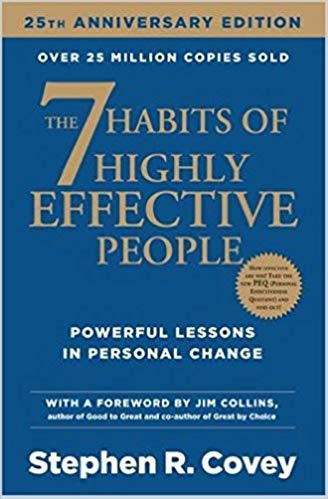

This article is an excerpt from the Shortform summary of "The 7 Habits of Highly Effective People" by Stephen Covey. Shortform has the world's best summaries of books you should be reading.
Like this article? Sign up for a free trial here .
Have you ever wondered why you can’t get through to your friends, family, or co-workers? Is there a way to get you on the same page and working toward the same goals?
Synergistic communication is a type of communication that requires listening, communication, and trust. It means opening yourself up to new possibilities, and it will help you work together with other people to create effective and harmonious relationships.
What Is Synergistic Communication?
Synergistic Communication means opening your mind and heart to different realities and possibilities. This requires vulnerability and comfort with (or at least tolerance of) uncertainty and some level of chaos; in its essence, synergy is a creative process — you’re working with others to create new possibilities — and that means you don’t know what the outcome will be when you start the process. You’re not entering the situation to push your proposition or blindly accept the other person’s, but rather to come up with a third alternative.
Sometimes situations devolve into chaos instead of evolving into synergy, and those negative experiences can make the people involved skittish about opening up in the future to the possibility of synergy and synergistic communication. For example, this can happen when a company creates policies that give employees the freedom to allocate some of their time to develop new ideas — as long as they still get their work done in a timely manner — but a handful of people abuse it and scare executives into reforming or revoking the policy.
Additionally, many people have paradigms that cause them to mistrust other people and interact in protective or defensive ways. Often these people only have brief glimpses of synergistic communication, such as when people come together in an exceptionally cooperative and collaborative way in response to an emergency. These events can seem like rare, extraordinary occurrences, but with the right approach you can experience synergistic communication regularly.
Synergistic Communication Require Trust
Synergistic communication can build upon momentum in a relationship or group dynamic. One person begins by being courageous enough to be authentic and open-minded, which empowers others and makes them feel safe to be open and authentic as well. This can build back and forth as everyone gains new insights, and those insights open new ideas, and the creative energy swells.
Think of brainstorming sessions you’ve been in: The first ideas might’ve been more obvious and conventional, but all it takes is one out-of-the-box suggestion to lead to more innovative and unexpected ideas, and that winding road can take you to places you never expected. Plus, the people involved in that process tend to come out of it more excited about and committed to the plan than if it had been a run-of-the-mill idea produced from a stale collaborative session.
Because synergistic communication requires vulnerability and openness, it’s critical that the people involved trust each other. There’s a positive correlation between trust and communication; higher trust allows for higher levels of communication that improve interdependent relationships and make synergistic communication possible.
Low-trust situations foster the lowest levels of communication, in which people are protective and defensive. You see this in situations like divorce settlements, where people feel the need to close all loopholes and cover all their bases for lack of trust and fear of being taken advantage of. Ironically, this kind of communication further erodes trust and spooks people into being even more protective and defensive. This form of communication leads to Win/Lose or Lose/Win frameworks.
A moderate level of trust creates respectful communication, when people are polite, honest, and genuine, but avoid opening up enough to risk confrontations. People who communicate at this level understand each other’s positions intellectually, but don’t assess their own paradigms or open their minds to new possibilities. Without the necessary components to come up with creative new ideas, this kind of communication tends to lead to compromise, a low form of Win/Win.
High trust leads to high levels of communication that produce creative, synergistic results. The trust allows everyone involved to feel safe and comfortable openly sharing their ideas and paradigms, with the knowledge that others will try to understand their perspective and build on it. This level of communication nurtures the P/PC balance that fosters even greater trust and positive results.
How to Build Trust for Synergistic Communication
A productive relationship with a high Emotional Bank Account lays the groundwork for synergistic communication, and each time the people involved achieve synergistic communication, it further builds their relationship.
For example, your annual family vacation is coming up and, per tradition, you’ve booked a beautiful cabin and week full of fishing and relaxation, but your mother-in-law is sick and your spouse sees that week as the only opportunity to spend time with her before her health continues to decline.
Instead of getting frustrated and exasperated about how much you’ve been looking forward to this vacation and how you’ve already made reservations — which would likely make your wife defensive and insistent about the importance of seeing her mother — you can acknowledge how much this means to your wife. This response gives her the psychological air to also recognize how much you’ve been looking forward to this vacation, creating an atmosphere where both sides feel understood and can synergize to think of third alternatives so everyone can be happy.
In some cases, synergistic communication isn’t possible and the No Deal option isn’t viable, leaving compromise as the only option. When this is the case, a genuine effort to share openly and understand each other will make great deposits in your Emotional Bank Account and generally lead to a more positive compromise.
Synergistic Communication in Your Life and Relationships
In order to make lasting change in your life, you need to make changes that foster that growth while also eliminating the factors that are limiting growth. Synergistic communication is especially effective at minimizing the negative forces that push back against positive growth.
Imagine you want to create a more positive climate in your family’s home; you feel your children are too competitive among one another, the level of trust between parents and children is lower than you’d like, and everyone has developed some bad habits in their daily interactions. Your positive, logical, conscious desire to improve your family’s culture is a driving force, but that will only get you so far — and most likely the effects will be largely temporary — unless you also work to eliminate some of the negative, emotional, and psychological restraining forces at play.
The more change you try to create by focusing solely on driving forces, the harder it will become to make progress — like if you were pushing a metal spring back, and the tension kept building until finally the pent-up force of the coils bounce back against you. When you use synergistic communication to tackle a problem, you see differences and challenges as opportunities to create new insights and possibilities, which actually transforms restraining forces into driving forces.
For example, a land developer is working on a project that has faced major delays, and the developer has fallen so far behind on his payments that the bank wants to foreclose. In turn, the developer sues the bank to avoid foreclosure. The developer and the bank are caught in a conundrum: The developer needs more money to finish the project so he can get a return and repay the bank, but the bank refuses to lend him any more money until he catches up on his current payments — and all the while, the project is falling further behind.
Synergistic communication is essential in your personal and professional relationships. It takes time and conscious effort to use synergistic communication in these relationships, and building trust is key. Make sure you think about the nature of the relationships, and what synergistic communication can help you achieve as partners or as a team.
———End of Preview———

Like what you just read? Read the rest of the world's best summary of "The 7 Habits of Highly Effective People" at Shortform . Learn the book's critical concepts in 20 minutes or less .
Here's what you'll find in our full The 7 Habits of Highly Effective People summary :
- How to prioritize the hundred tasks you have to focus on the one or two that really matter
- The right way to resolve every disagreement and argument
- How to avoid burning out and succeed over 20+ years






